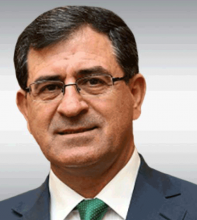You are here
Fed reactivates key monetary tool
Dec 23,2015 - Last updated at Dec 23,2015
By raising the interest rate by 0.25 per cent (25 percentage points), the US Federal Reserve Board voted unanimously to reactivate a key monetary tool that had been defunct for seven years.
It was used the last time in December 2008, when it was reduced to the level of zero to 0.25 per cent and remained at that level since then.
The reasons that prompted the Fed to keep interest rates at levels close to zero since December 2008 no longer exists.
The US economy was weak then and needed to be treated by long-term medicine, represented by an interest rate close to zero. The aim was to restore economic growth, as well as the labour and financial markets.
These objectives have been achieved; the growth rate reached 3.9 and 2.1 per cent in the second and third quarters of this year.
Stock markets increased by 207 per cent, compared to the level in March 2009.
The unemployment figures reached their lowest level in seven years and settled over the past two months at 5 per cent only, as the US economy managed to create more than 12 million jobs since 2009.
Inflation rates began in January this year at minus 0.1 per cent and reached the highest level only at 0.5 per cent, last November, while the target by the Federal Reserve Bank is 2 per cent a year. This means that high inflation does not worry the Fed; hence, it felt that it was time to stop the medication for the patient, and also for borrowing costs to return to normal levels, as this will help inflation not to rise to levels higher than the Fed target of 2 per cent.
Moreover, forecasts indicate that the economic situation will evolve in a way that will ensure gradual increases in the interest rates. Disabling the interest rate tool during the last seven years forced the US Fed to resort to unconventional tools to revive the economy, represented in the purchase of mortgage bonds and other bonds.
This strategy, known as quantitative easing, encouraged borrowing and lending, revived stock markets and contributed to reaching a state of constant economic growth.
The US Federal Reserve Board, fully convinced that it had the best of what could be done during the past seven years, was no longer willing to expand the size of the Federal Reserve’s budget, which reached $4.5 trillion.
Whether the move to raise interest rates means that the Fed is transiting from an unconventional to a tight monetary policy era depends on the state of the economy in the future.
Raising the interest rates may not be sustained in the future, especially in the event of an adverse shock to the economy.
Expectations tell that even if the Fed continues to raise interest rates in the future, they will not reach the levels they had before 2008 because the global economy is still in need of low levels of interest rates, but not close to zero.
The writer is director general of the Association of Banks in Jordan. He contributed this article to The Jordan Times.












